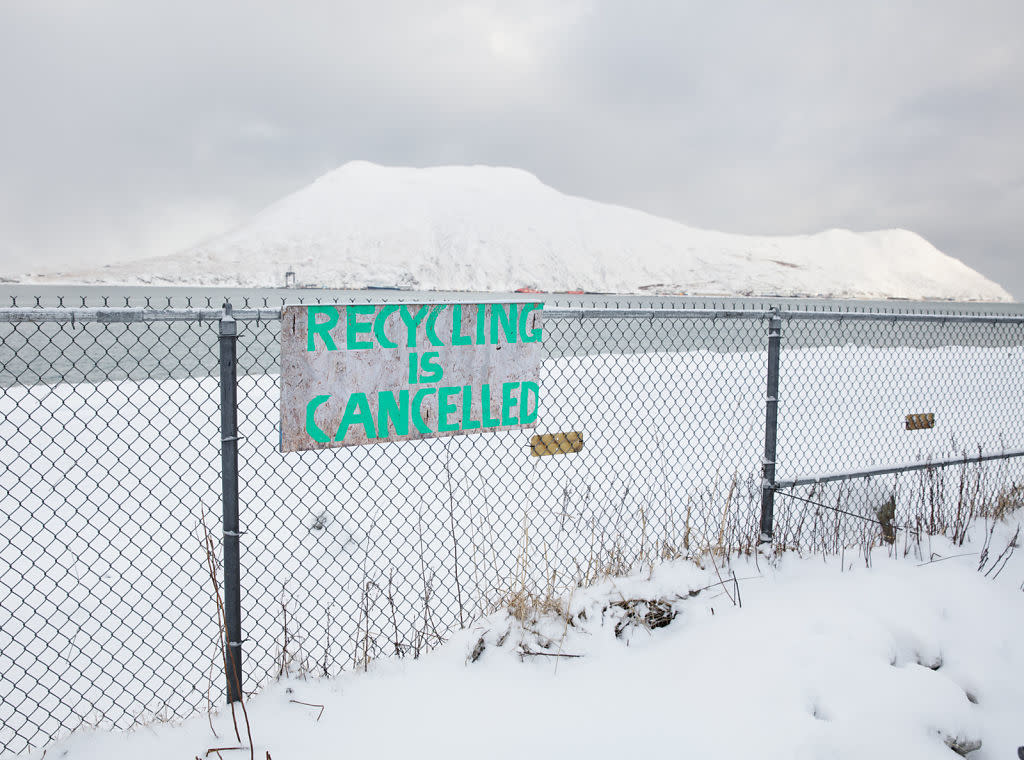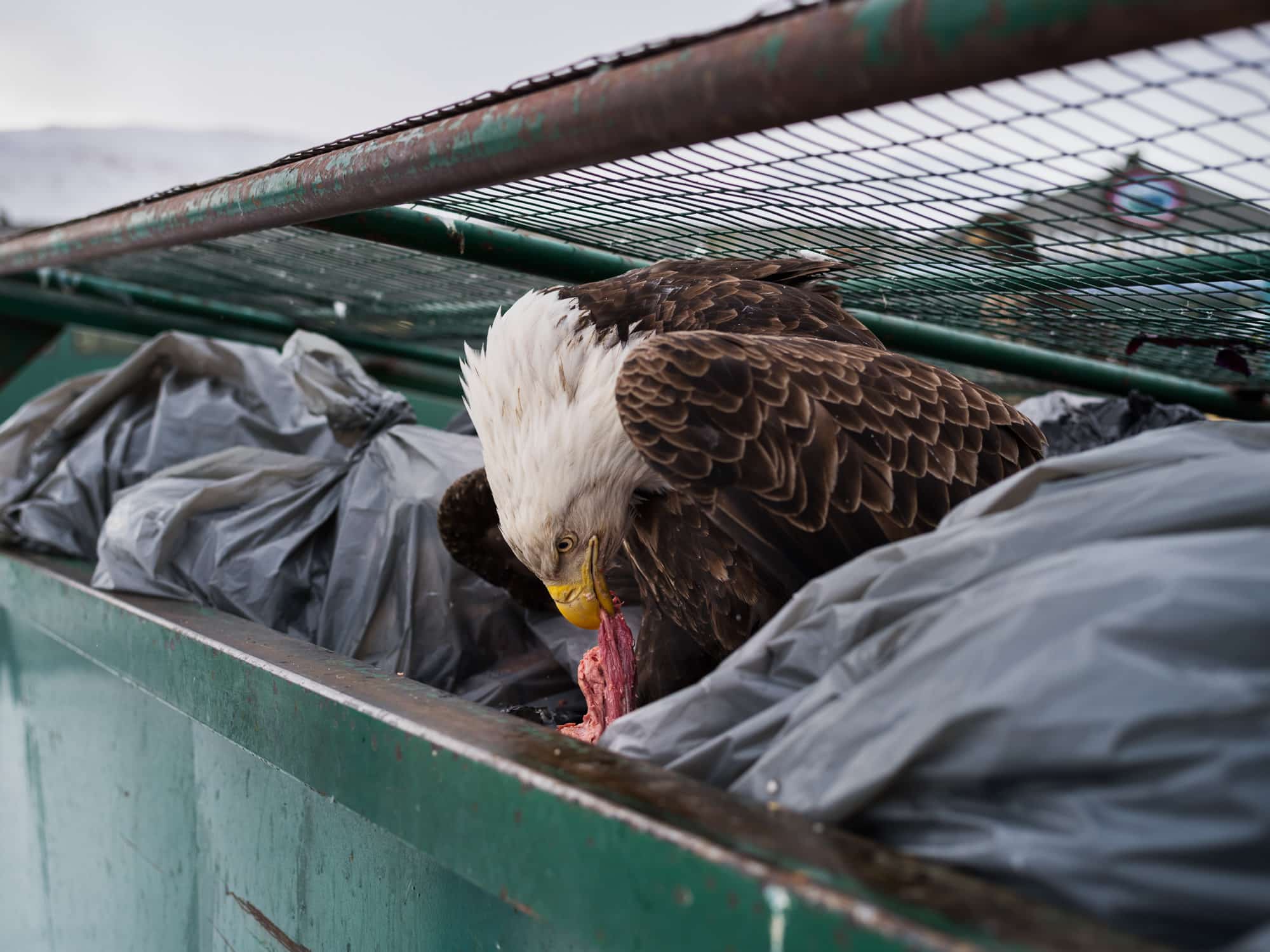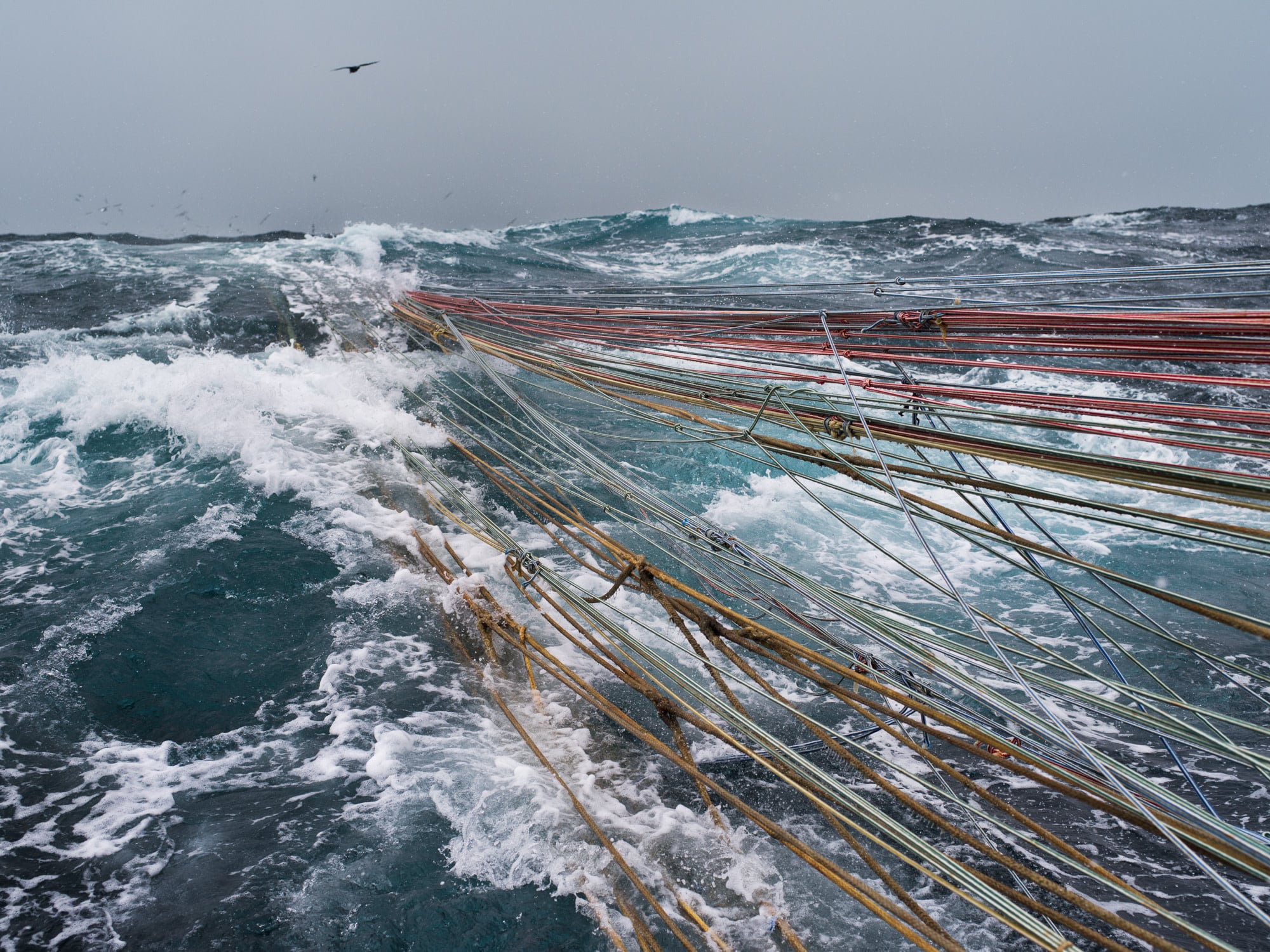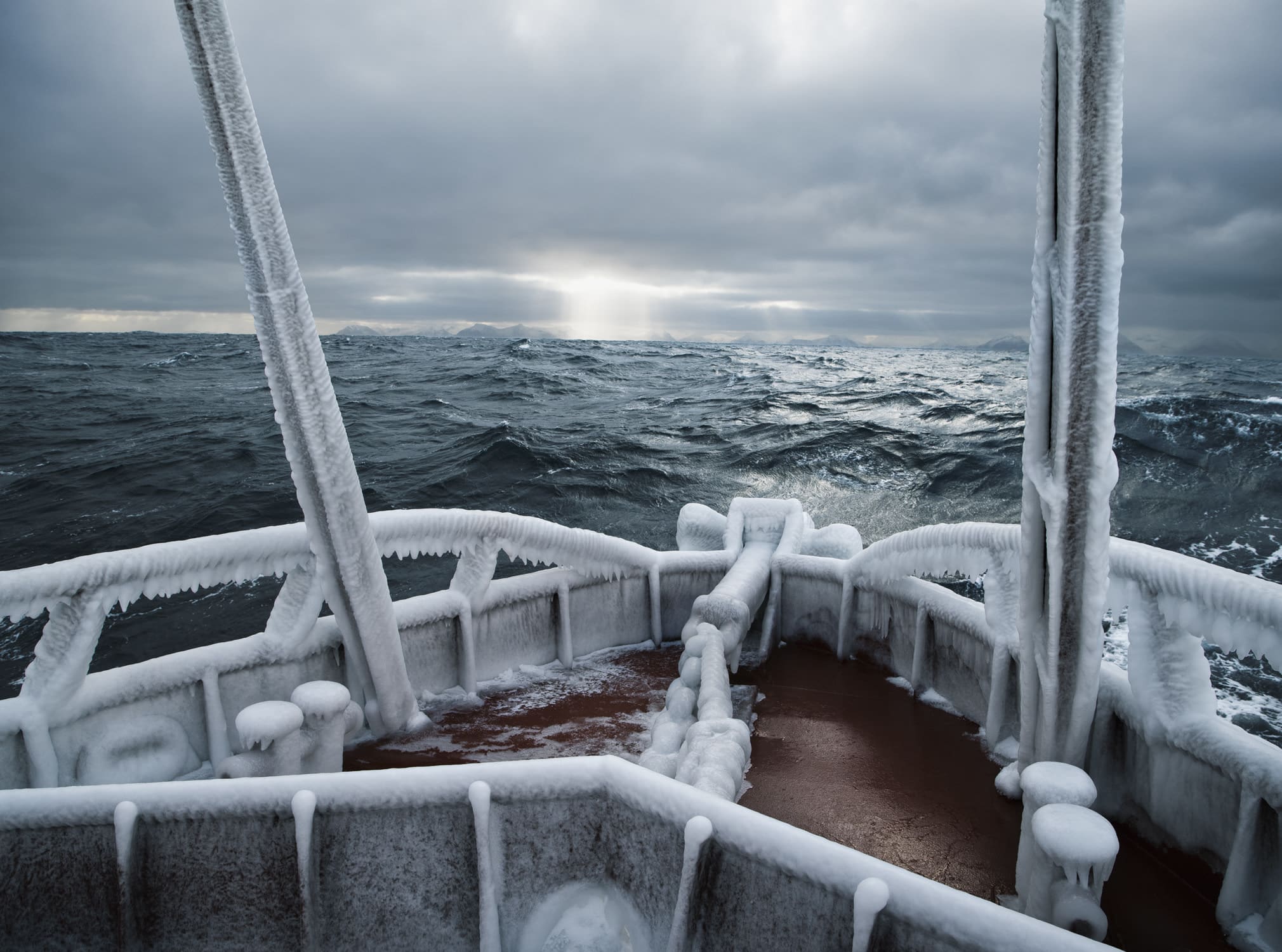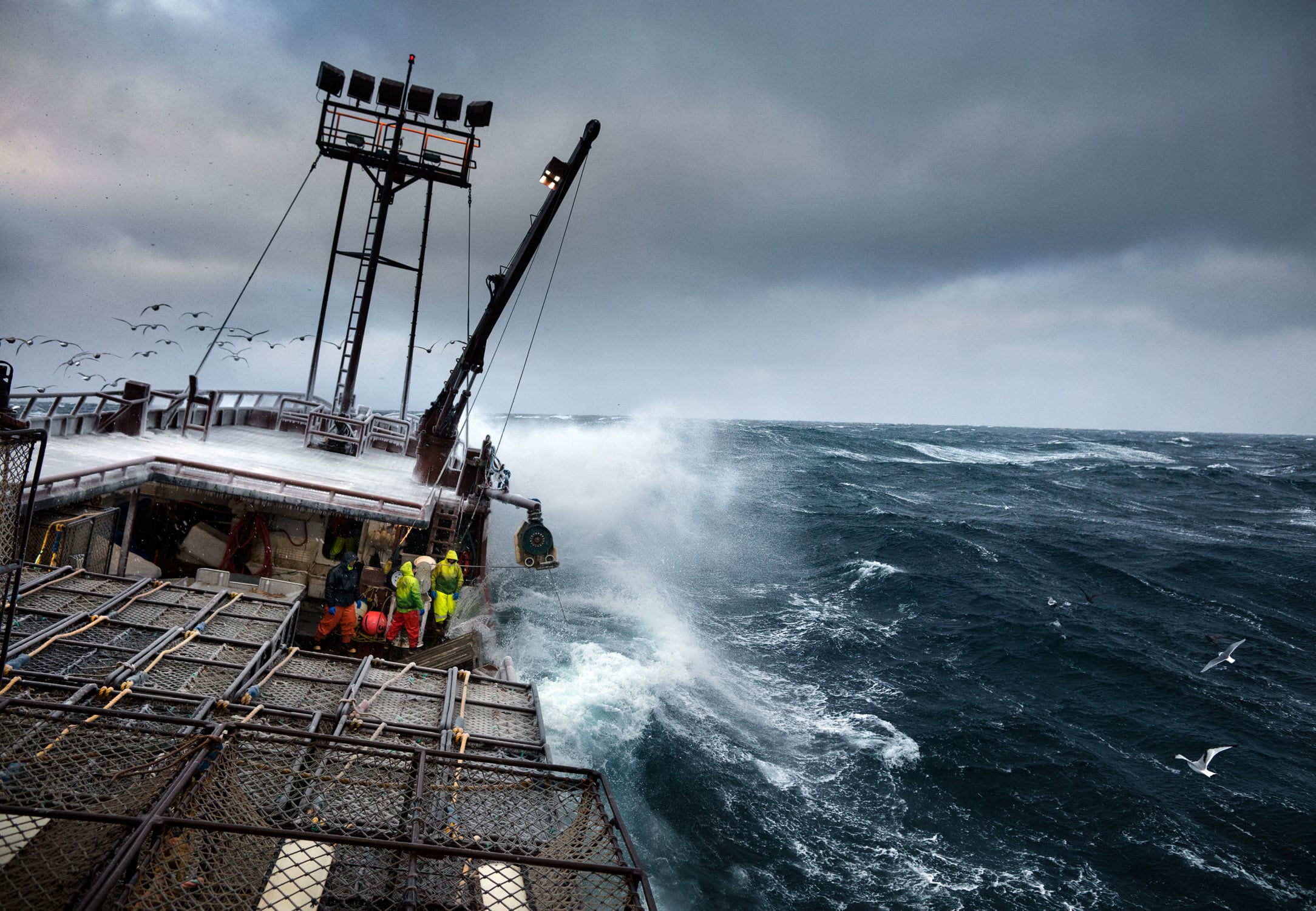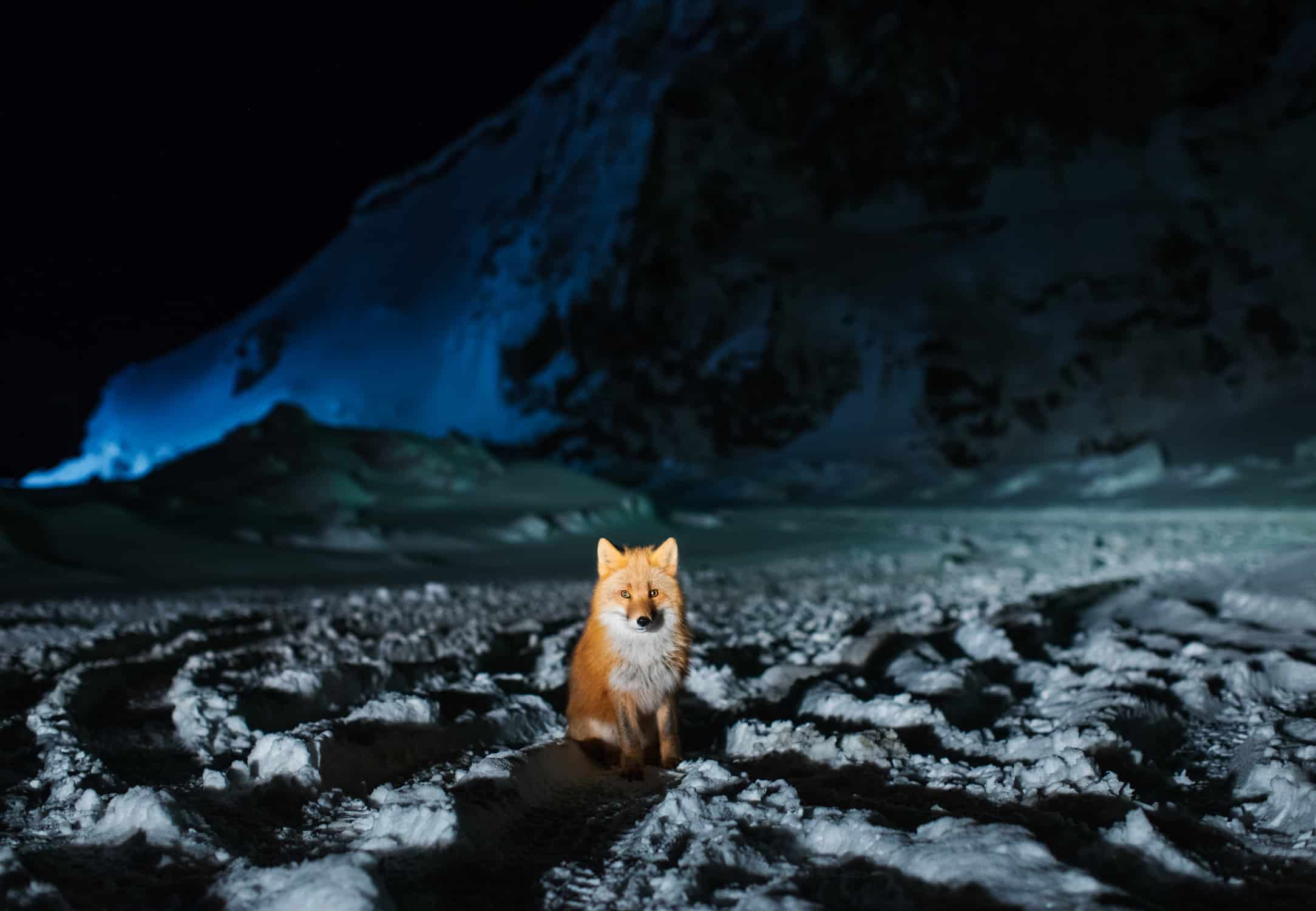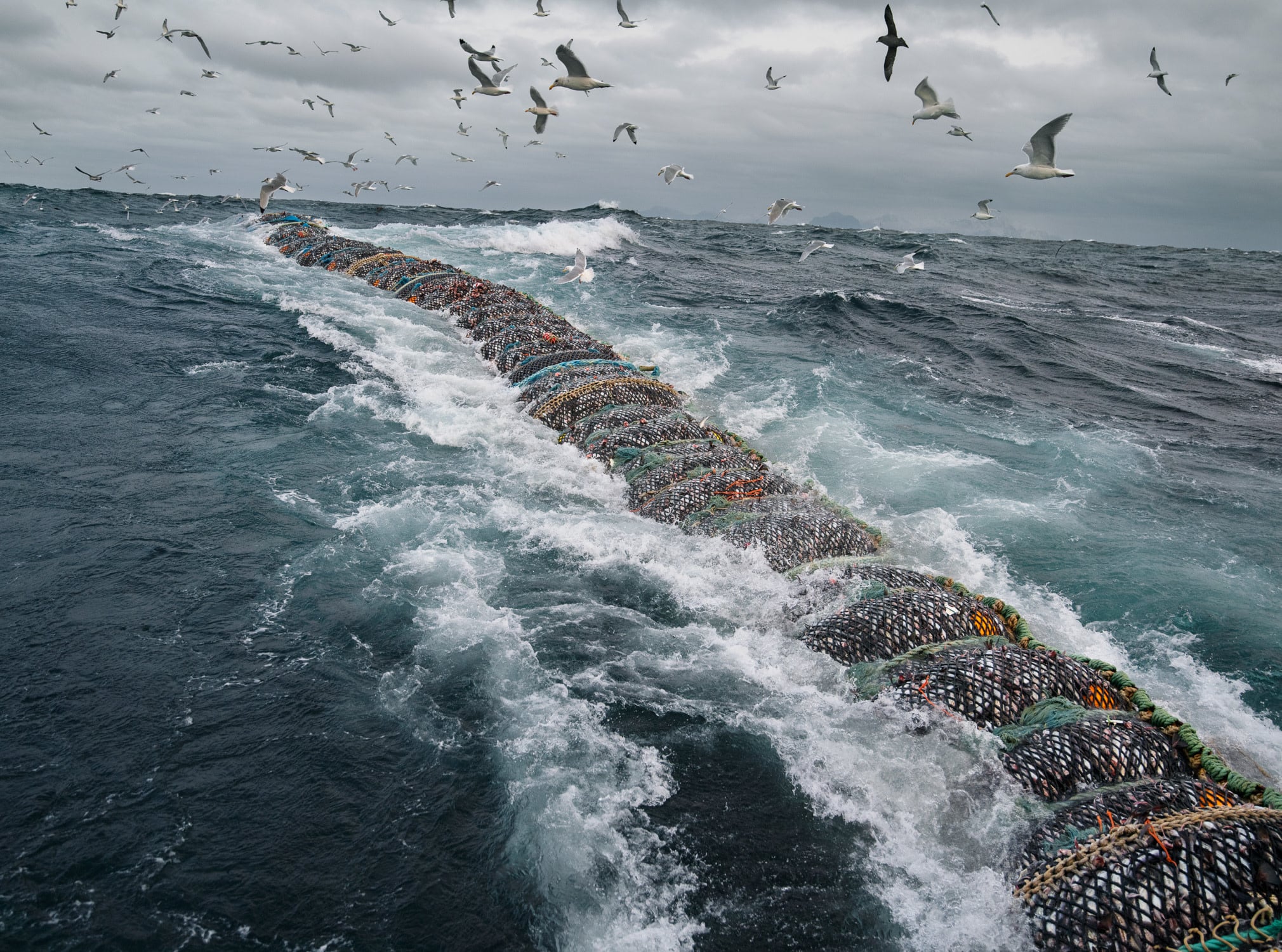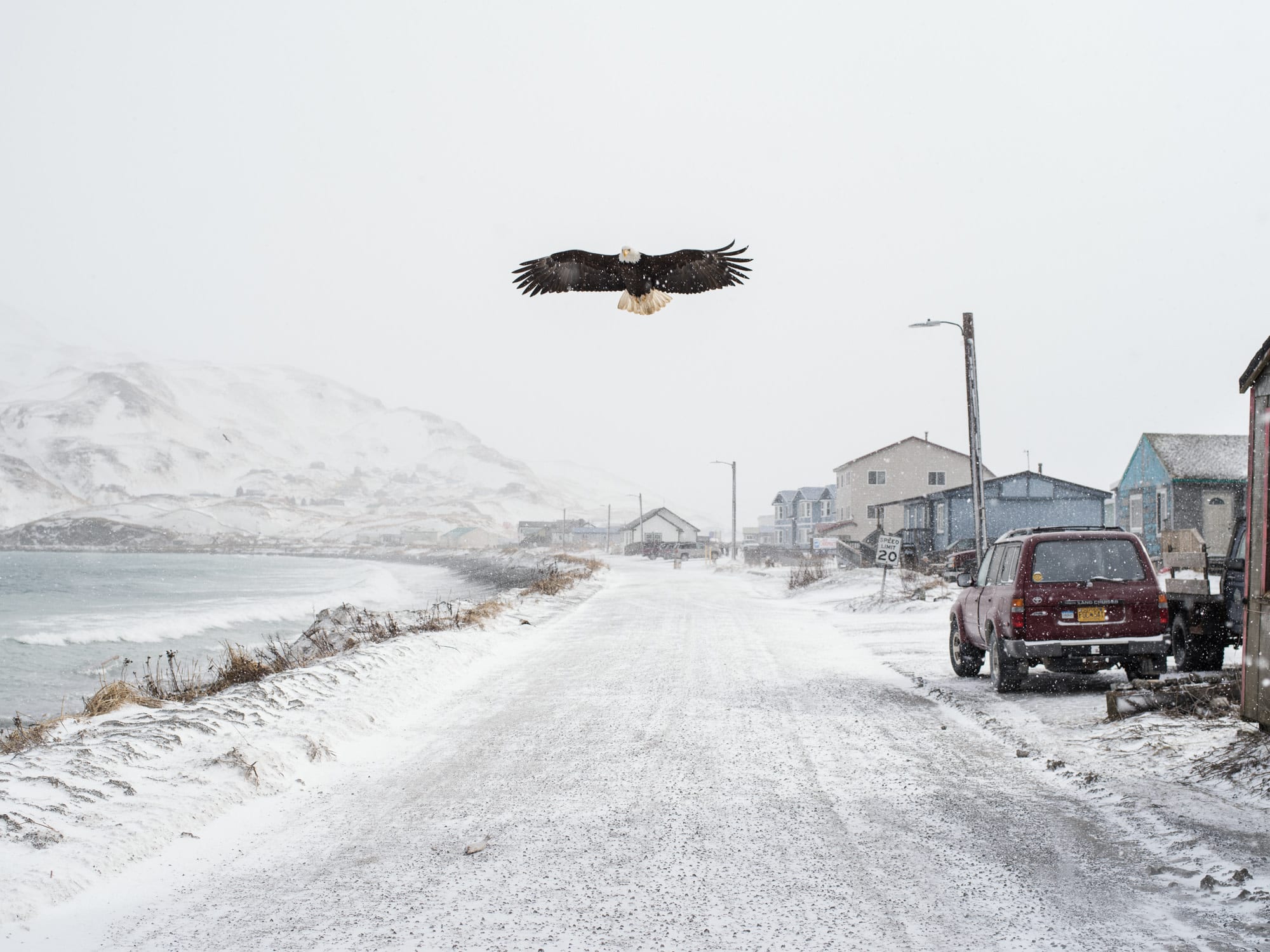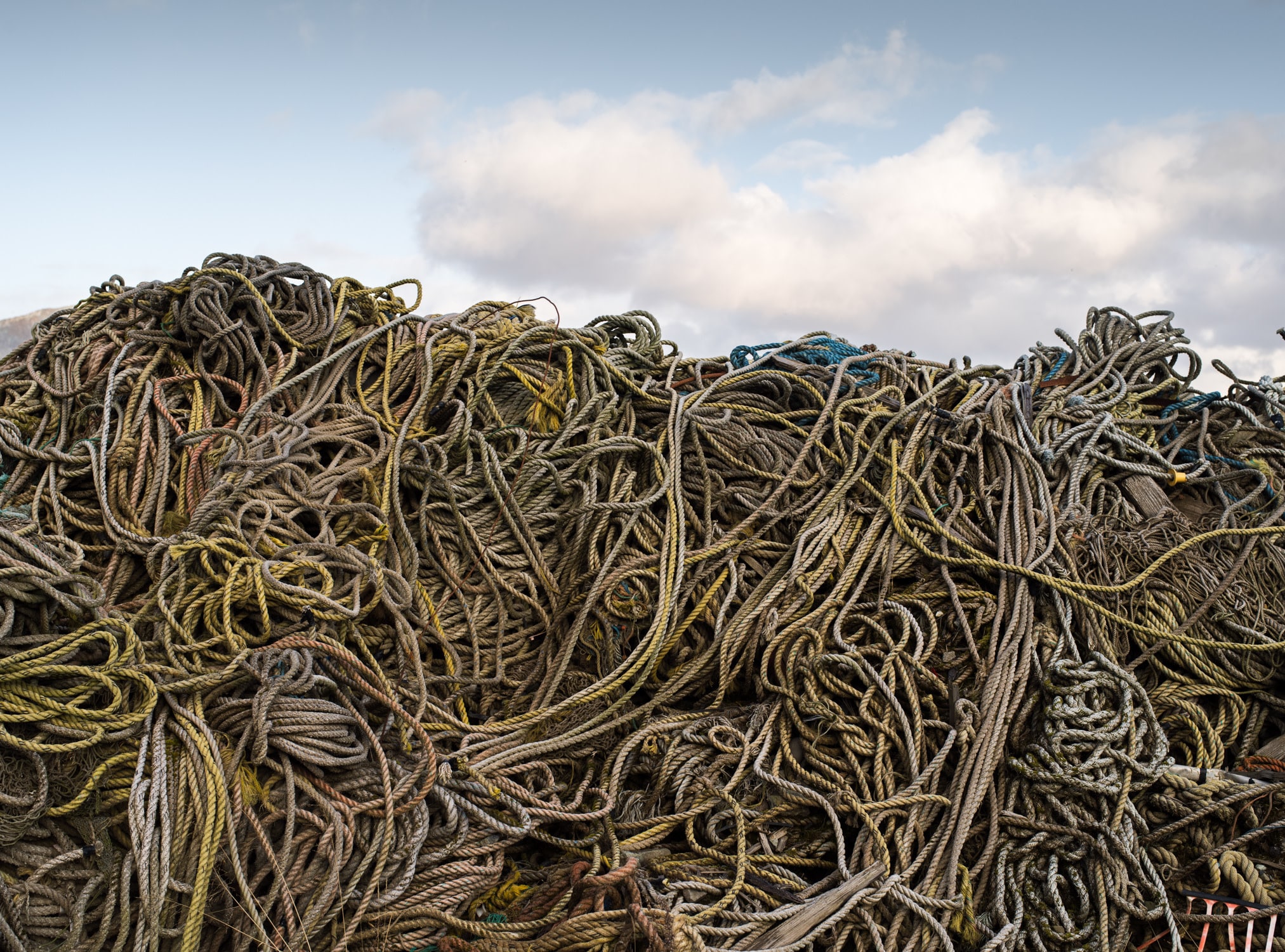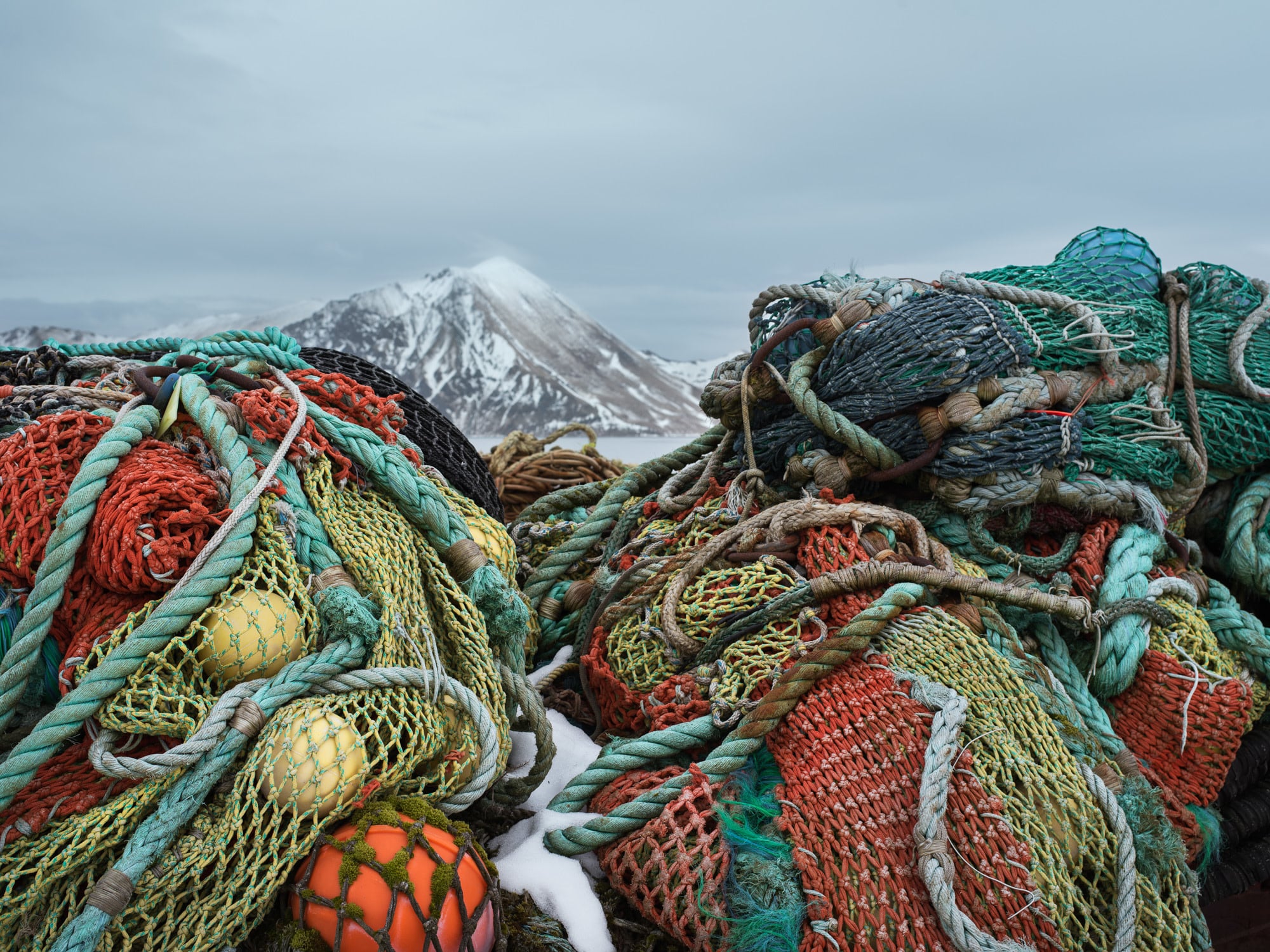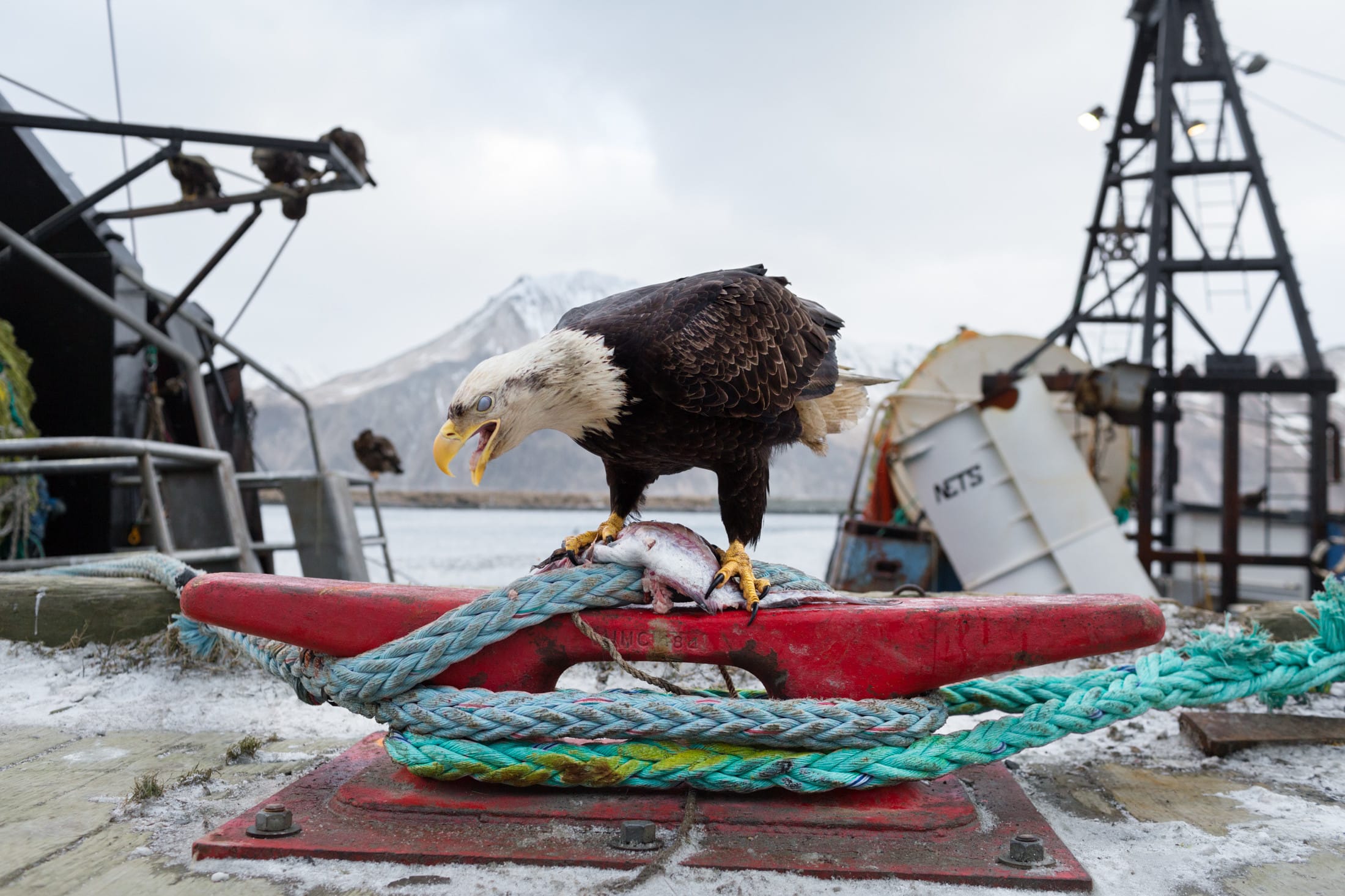Photographer Corey Arnold was first acquainted with fishing at age two and cameras at age ten. Having worked as a fisherman in Alaska on salmon and crab boats for the last 21 years, Arnold’s photos capture the small details and quiet moments rarely witnessed by outsiders. From fishermen hugging mistakenly harvested catches, to cats tightroping atop rows of crab pots, to hanging masses of severed gut-baring, blood-soaked bait, Arnold’s images document the gritty, majestic, and ethereal all somehow coexisting out on remote oceans.
In Arnold’s newest series, Aleutian Dreams, he focuses less on the individuals working on the boats he visits and more on the relationship between the fishing industry and nature. Arnold was actually working as a fisherman while shooting previous works, such as Graveyard Point, but for this series, he was simply revisiting Dutch Harbor, the place he’d fished for seven years.
We caught up with Arnold to chat about his approach to photography, the pervasiveness of cameras in everyday life, shooting and lighting in extreme conditions, and the effect of the Trump presidency on art.
Format: Hi, Corey. Your practice as a photographer ties in so intimately with your occupation as a fisherman. Has being a professional photographer changed the way you look at fishing, the way you relate to others in the industry, or how you fish?
Corey Arnold: My favourite time of year is the experience of just being up in Alaska fishing and escaping computers and everyday life, so I try not to spoil that experience with my camera by getting up in people’s faces too much. The great thing is it’s very natural for me to bring my camera along and take photos as they happen, and because I’m not forcing anything it doesn’t take up too much space. Ultimately, I spend two or three months a year up there, so it doesn’t have the pressure of being on a photo assignment where you have to shoot and get it done. It’s very casual in a way, at least while I’m working as a fisherman.
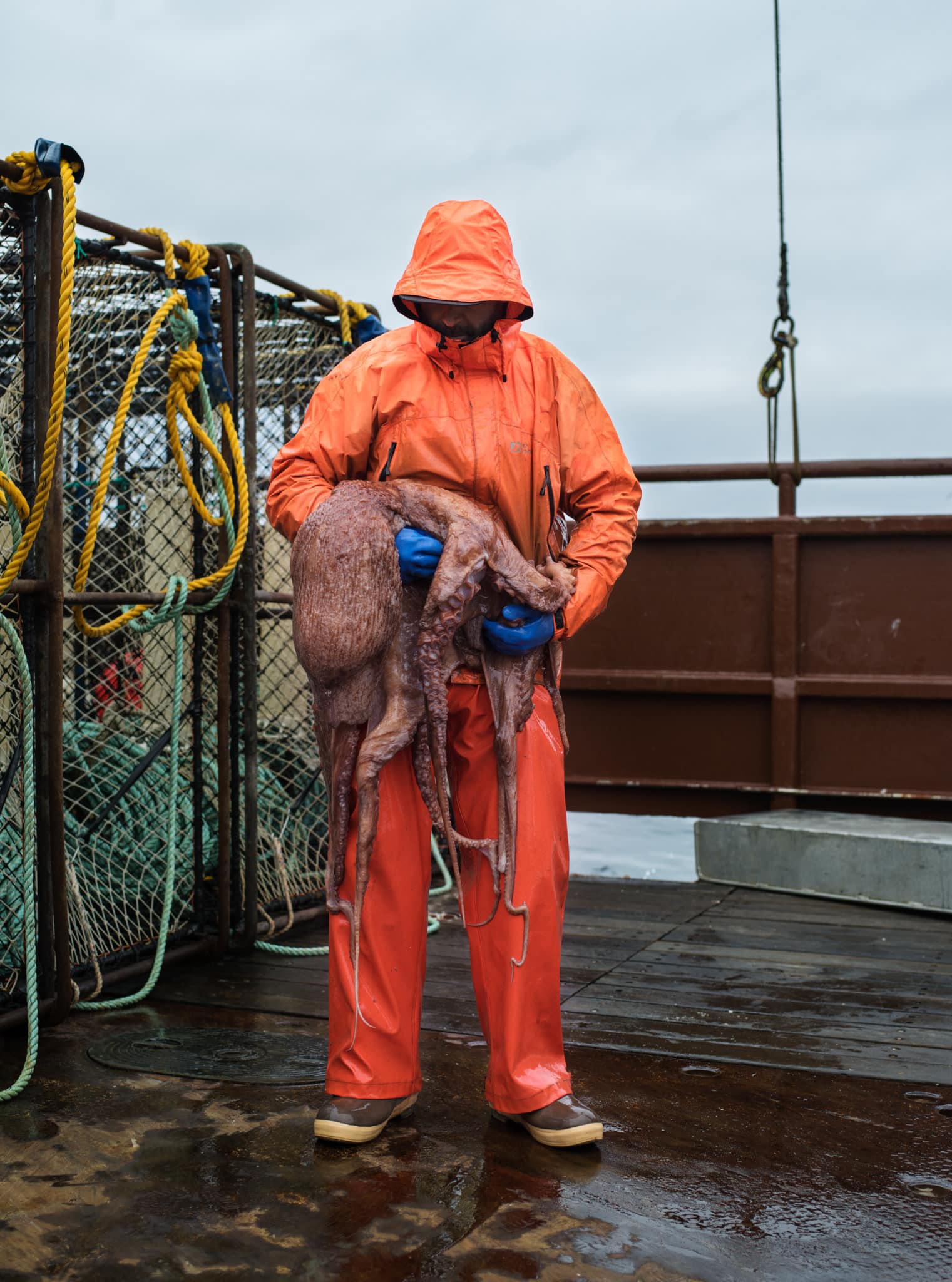
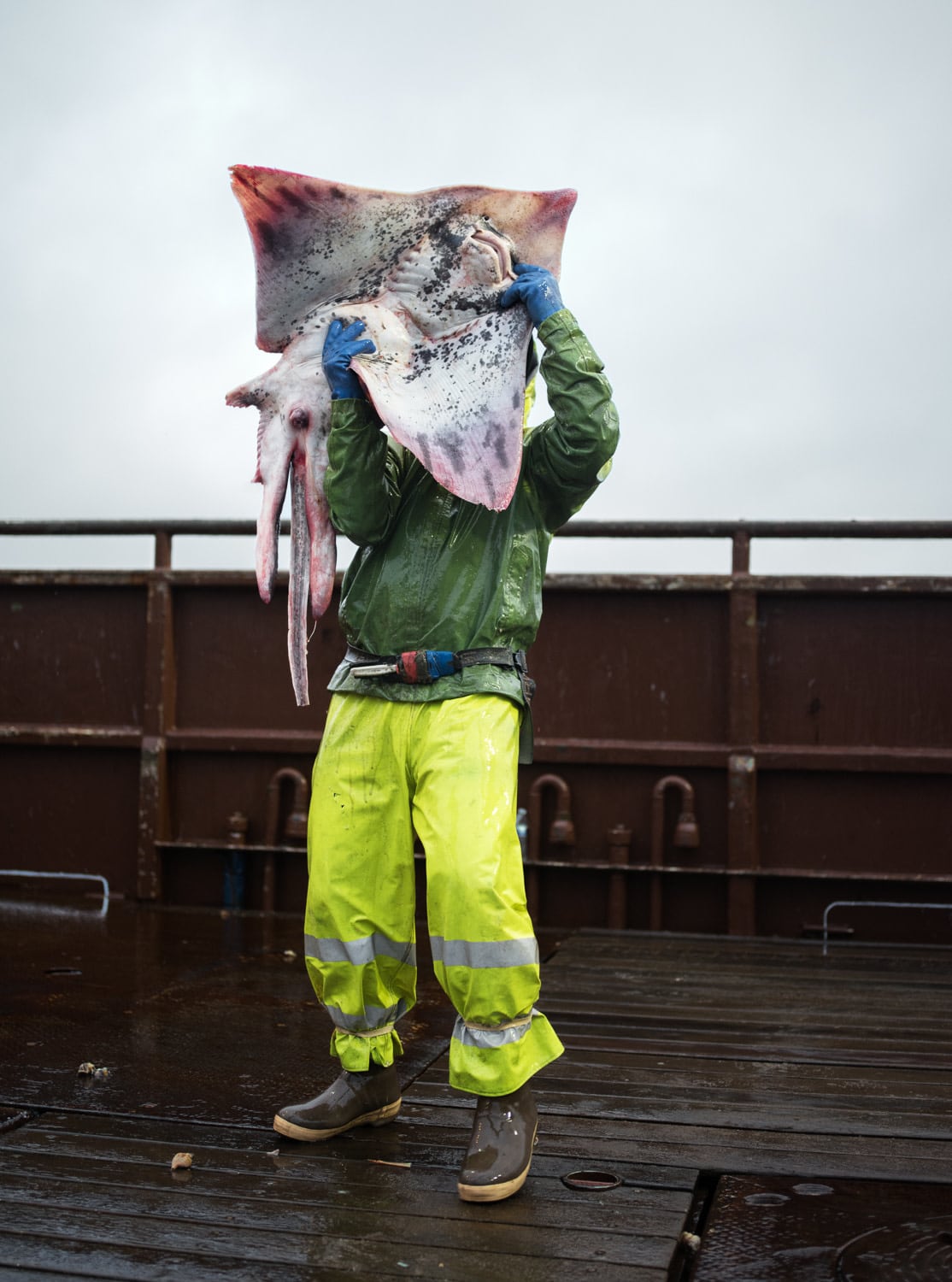
That sounds very serendipitous. So you see something you want to photograph and then run to grab your camera and hope it’s still there?
Sometimes. But I’ll plan to take some photos on days when I have downtime. I guess there’s a bit of a healthy mix there. It gets harder during my salmon fishing operation. I have four to five guys and girls working for me and I’m running two small boats and a whole camp. So at the same time as being a casual environment for photography, running the operation is a lot of work and it can be difficult to shoot at the same time.
So do you accumulate a mental list of images throughout your days fishing that you want to shoot, then aim to take all those photos when you aren’t working?
The majority of the time I’ll be pulling up a net or something and staring at this crazy scene with bad weather and a ton of fish and just kicking myself because I don’t have a camera in my hand and can’t get one because I’m really needed. Half the time I’m thinking, ‘God, I’m missing this.’
Light plays an important role in Aleutian Dreams. In Dark Sea, for instance, there’s this intense contrast of dark storm clouds above a brightly lit rising wave. How did you achieve that dynamic?
That was an unusual scenario. A narrow beam of sunlight shone through as the skies were clouding over, and part of the beam was blocked by the boat’s rigging, making the centre part of the wave noticeably brighter than the rest of the water while the background remained these super stormy skies.
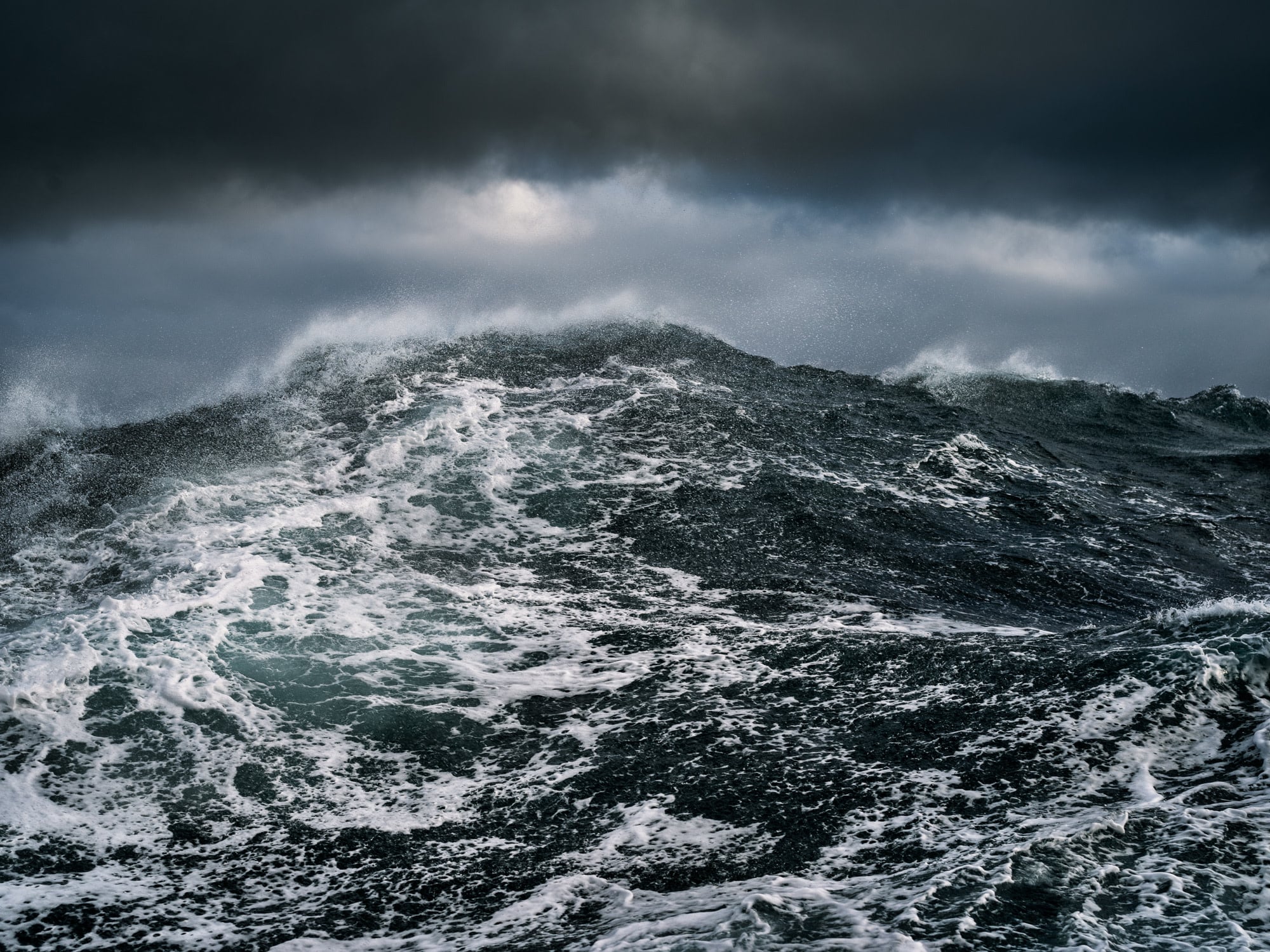
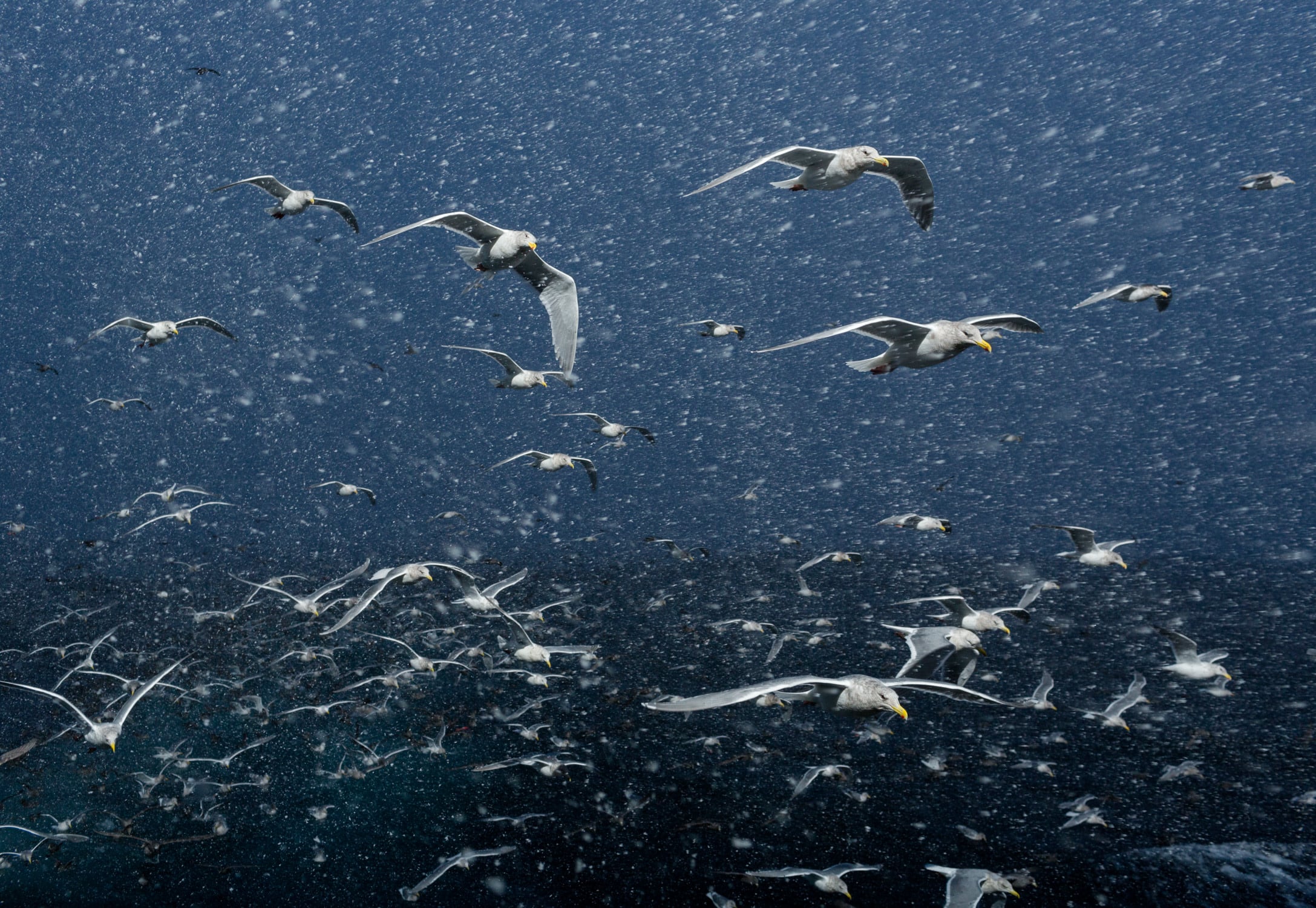
There’s another great contrast in Headstrong where you get this sharp highlighting of the seagulls flying towards us, but at the same time they’re clearly in the thick of a whiteout snowstorm at night. How did you light that?
In that case, I was on this big factory trawler and had climbed the rigging and hooked up two 1000-watt AlienBees strobes about forty feet above the water. I wrapped them in turkey bags to keep the modelling light on because they’re getting brutalized by the weather up there. I put on a really low wattage light bulb that keeps them warm, as the fans don’t do anything because they’re stuck in these plastic bags.
Sometimes the boat deck lights are so weak that you can’t really shoot in the winter without extra lights. You can almost do it with newer cameras that shoot low light, but you never really know what the conditions will be. However, this was one of the only photos in the series I shot with added light. I don’t have an assistant or anything, so it’s hard. I do very subtle color correction. I don’t make any radical shifts, but I’m shooting raw so the files have to be fixed up a bit.
You said in a 2013 interview with The New York Times Lens Blog that “the ultimate goal for me is to take documentary subjects and push them in a way, or play with things in a way, that opens up new ideas about a place that might not necessarily be real but still gives you some insight about the mentality there.” Do you approach photographing this kind of metaphorical representation with a concrete idea of what you’re after, or do you intuit the effect that you’re going for in the process of shooting?
It’s a mix. I’ll stumble into things and then spontaneously set something up because it feels interesting. For instance, for Kitty and Horse Fisherman I wasn’t thinking of the deeper meaning of what the photo was going to mean. It wasn’t planned—he was trying on his Halloween costume, I was doing portraits, then the cat walked by and I told him to pick up it. It fits in the series because it says a little bit about the sense of humor in the fishing industry. I wanted to show that we’re constantly joking about everything, but that doesn’t mean it was a straight documentary photo. It was slightly set up.
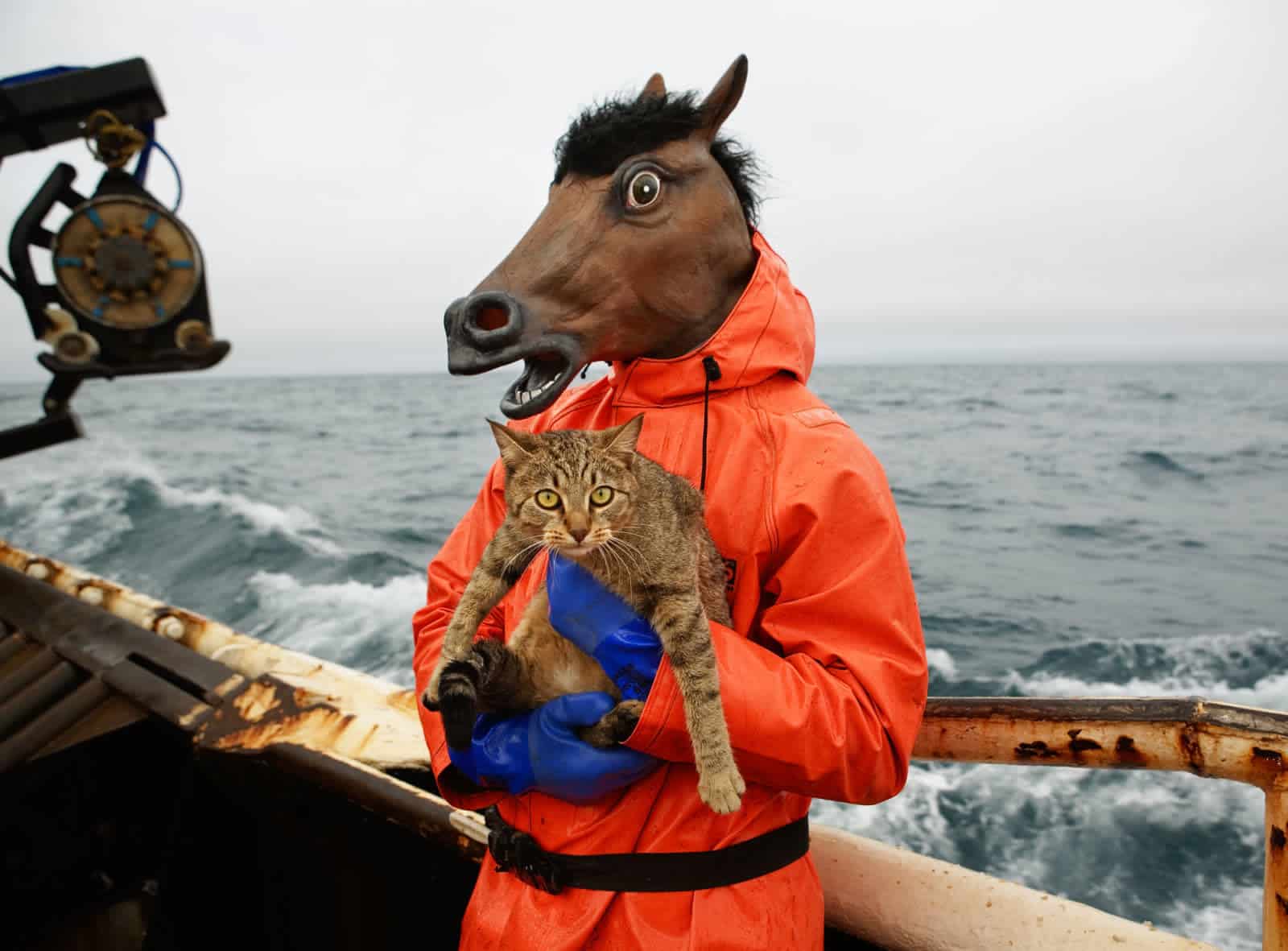
Did you have this idea that you needed to find a way to evoke that humor beforehand, or did you only realize this need in the moment of taking that photograph?
In that case it was in the moment. But I’m always looking to take strange photos that people look at and ask questions and don’t necessarily know what’s going on. It’s part of the fun and the intrigue of photography when you see a picture that captivates you enough to stare at it, and you don’t really have all the answers, and you don’t understand why it’s happening. Sometimes just that alone is interesting—you don’t ever need to find all the answers.
That reminds me of the photo Nakeen from your Graveyard Point series.
That was me just clicking like crazy as we were walking toward this old cannery. I didn’t set it up, that’s just how we were walking into it. It’s one of my personal favourites. I guess it says a little bit about the bizarre, haunting adventures we have up there. We’re always exploring these strange places.
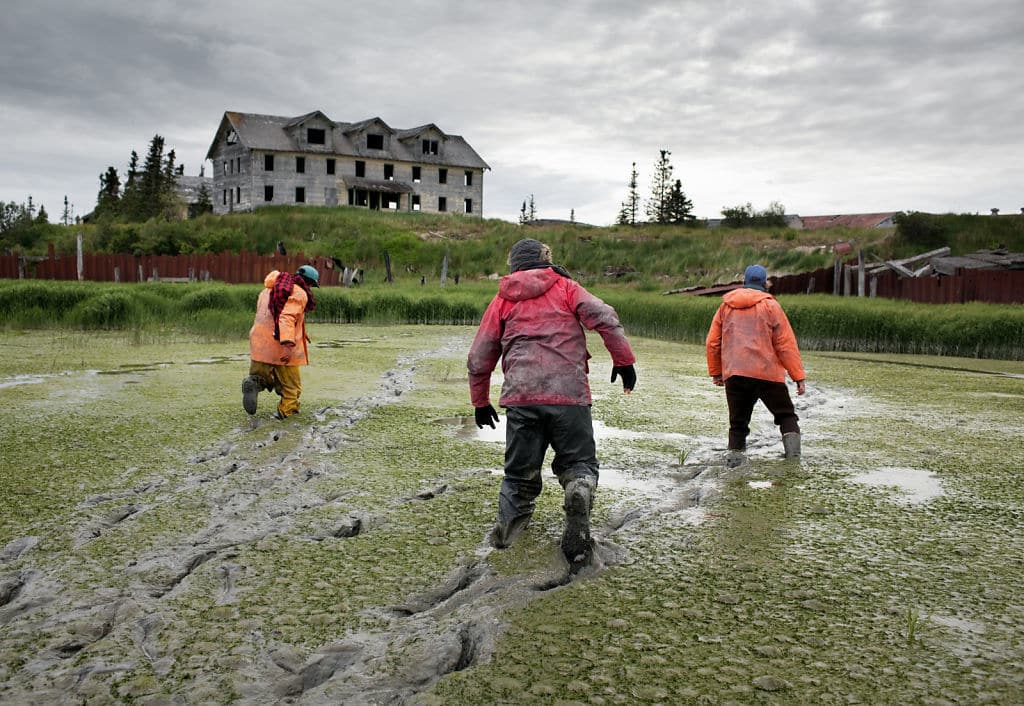
Is there ever anything that’s too much for you to photograph? Something you can’t capture in an image, or just something you wouldn’t want to photograph?
Often it’s more that I don’t want to inconvenience other people. I’m sensitive to people just living the lifestyle. The intrusion of cameras in every aspect of our lives is a little too much. Everyone’s taking pictures of everything.
When I first started shooting fishing it was very undocumented. It was hard to find any images at all of what life was like in these different fisheries. Now you go online and everyone on every single boat is at least taking pictures with their phones, if there’s not a photo or video enthusiast with a GoPro on their head. I don’t like to be that guy who’s got their camera out all over the place all the time. Maybe I miss out on some good shots and characters, but when I’m up there I really identify with the fishing lifestyle.
Do people generally respond well to you documenting the whole fishing experience?
Yeah, they’re usually pretty into it. I publish so many photos in the commercial fishing trade magazine National Fisherman that a lot of fishermen know me by name. Which is kind of cool, because they’re psyched that maybe they’ll get to be in the one magazine dedicated to giving their trade validity, which is really exciting.
You’re out there fishing on the Bering Sea, above the Aleutian Islands which extend westward toward mainland Russia, just hundreds of miles away. It’s the final North American frontier. Are you thinking about geopolitics—or simply about being American—in the process of creating your art?
I don’t really think about Russia because we’re so far from any international boats, and that’s a part of the country that’s pretty barren and sparsely populated. But I shot most of the Aleutian Dreams work that’s in the gallery now in January and February of this year, so the inauguration was happening while I was up there and politics were definitely fresh on my mind. There are some subtle references in the photos that portray the despair of America going to shit.
For example, the eagles digging in the garbage, the image of the sunken ship in the harbour that’s titled Nirvana, the “Recycling is Cancelled” sign at the dump—it just seemed like that would be Trump’s campaign slogan for 2020. While my intention wasn’t at all to make a political series, the mood definitely injected itself into my work.
